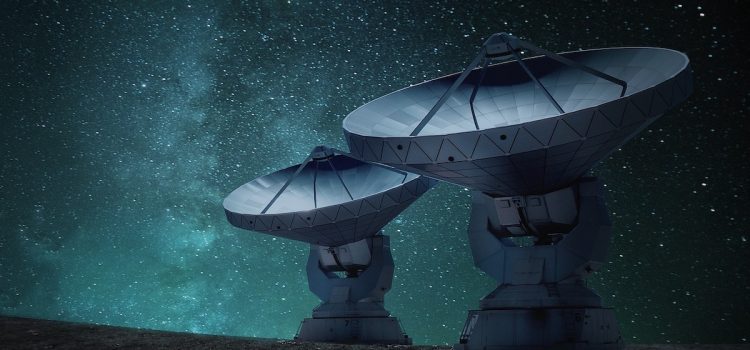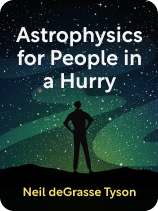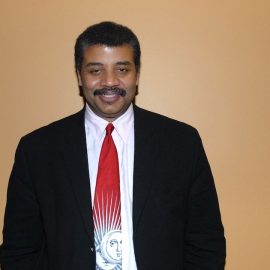

This article is an excerpt from the Shortform book guide to "Astrophysics for People in a Hurry" by Neil de Grasse Tyson. Shortform has the world's best summaries and analyses of books you should be reading.
Like this article? Sign up for a free trial here.
How do astronomers see exploding stars and black holes? How do they observe pulsars and the birth of stars?
Astronomers figured out over time that various frequencies of light make it possible to observe space. The full spectrum of light allows them to study the universe in more and more ways.
Keep reading for an explanation by astrophysicist Neil deGrasse Tyson.
Observing Space With the Full Spectrum of Light
Scientists observe space to establish physical laws. While our ancestors relied on what they could see, today we have access to a whole invisible spectrum of light beyond what our eyes can perceive. Many previously unknown types of invisible light have been discovered in the last 200 years, and, though their first use in astronomy was purely accidental, today they are used for the bulk of observations astronomers make of the universe.
The fact there’s such a thing as invisible light was discovered by William Herschel in 1800. It was known in his time that white light could be split into multiple colors using a prism. Tyson describes how Herschel used thermometers to measure the temperature of each different color. His “control” thermometer, placed just beyond the red end of the spectrum, shouldn’t have measured a temperature increase, but it did. Herschel had found infrared light at a frequency below what the eye can detect.
(Shortform note: William Herschel had a knack for discovering the invisible. He’s most famous for being the first person since prehistory to discover a new planet—namely, Uranus, which is too faint to see with the naked eye. Also, by using the most advanced telescopes of his age, he discovered that many stars our eyes see as one point of light are really binary systems in which two stars orbit each other.)
Later, many other types of light were discovered, from radio waves to microwaves, ultraviolet light, x-rays, and gamma rays. All these forms of unseen light differ from each other only in wavelength and frequency, from the low end (radio) to the high (gamma). The visible light we see every day represents only a tiny sliver of frequencies between the ultraviolet and the infrared. Yet, it took astronomers quite a while to realize these other frequencies were useful tools for looking at the sky. When they did, says Tyson, a whole new universe opened up before them.
| The Electromagnetic Spectrum Radio waves, microwaves, infrared, visible light, ultraviolet, x-rays, and gamma rays make up the seven types of electromagnetic radiation—“electromagnetic” because it’s produced when charged particles release energy. For example, when iron is heated, the electrons in its atoms jump into higher, more energetic orbits. When they fall back to their lower-energy states, the electrons give off light that we see as a red glow. One of the greatest unsolved riddles of light is how it can be observed as both a particle (called a photon) and a wave in the electromagnetic field. Of specific interest to astronomers is the fact that light waves are compressed (blue-shifted) or stretched out (red-shifted) if the glowing object—for example, a star—is moving toward or away from the observer. Called the Doppler effect, this shift in light waves is what lets astronomers measure the speed and direction of celestial objects. |
As with many scientific discoveries, the first observations outside of visible light were made by sheer accident. Tyson recounts that the first radio telescope was built to look for earth-bound sources of radio interference. What it found was a giant radio source in the sky—the center of the Milky Way galaxy itself. The first microwave discovery was made at Bell Labs, also by technicians who were trying to clean up interference in their microwave receiver. Once they’d accounted for all terrestrial sources, there was still a little interference left. Physicists who read about their findings realized the technicians had stumbled upon the microwave echo of the Big Bang itself.
(Shortform note: The Earth is a noisy place, electromagnetically speaking, and astronomers have to account for that. In addition to the radio waves, microwaves, and TV signals humanity produces, the Earth itself glows in the infrared, as light from the sun and heat from Earth’s interior warm the planet’s crust. Traditional astronomy using visible light has become more difficult over time as light pollution from cities makes it harder to find a truly dark sky.)
Today we use a vast array of instruments, both on Earth and in space, to explore the cosmos in all bands of light. X-rays reveal exploding stars and black holes. Radio waves show the location of pulsars—superdense remnants of long-dead stars that spin at an incredible rate. Infrared light shows stars being born deep in the heart of clouds of dark gas. The Hubble Space Telescope explores the sky in visible light far above the distortion of the Earth’s atmosphere. Taken altogether, our tools to see the sky paint a picture of a universe we’re only just beginning to understand.
(Shortform note: The most notable addition to astronomy’s arsenal of telescopes since the publication of Tyson’s book is the James Webb Space Telescope, launched in 2021. Unlike the Hubble, which is primarily a visible light telescope, the Webb is an infrared telescope and therefore had to be parked in an orbit that would shield it from the heat of the Earth and the Sun. Infrared light allows us to see through the dark clouds of gas where stars are being born. It also lets us see farther back in time—due to the redshift effect mentioned earlier, the light from the most distant galaxies is only visible in the infrared.)

———End of Preview———
Like what you just read? Read the rest of the world's best book summary and analysis of Neil de Grasse Tyson's "Astrophysics for People in a Hurry" at Shortform.
Here's what you'll find in our full Astrophysics for People in a Hurry summary:
- Neil deGrasse Tyson's simple explanations of some of the mysteries of the cosmos
- Why everyone should understand where we fit in the universal scheme
- Why humans need to climb off their pedestals






